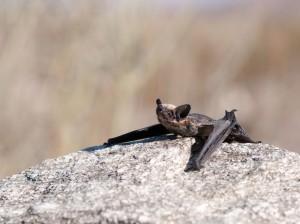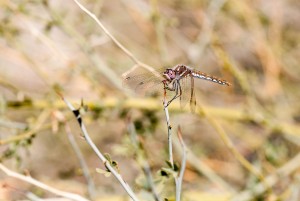Known to some of you, I recently accepted a tenure track position at the University of New Hampshire in their Department of Molecular, Cellular, and Biomedical Sciences.. I was helped immensely by my Twitter and blog friends (especially this set of posts), and this is my attempt at paying it forward. I’d really like to share my thoughts and experiences with those going through what I just finished..
First off, some basic info. I study evolution/adaptation/genomics.. this is an extremely hot field right now, which I’m sure was to my benefit. I was on the market only 1 year, having sent in my 1st application in October of 2012. I sent in about 35 applications, with a mixture of jobs for which I thought I was perfect, and others which were more of a stretch.. I have no glamour pubs.. in fact, a very modest publication record.. I got 1 phone interview, 2 on-campus interviews, 1 offer.. I was in year 2 of my 1st postdoc.
A few random points:
- The job wiki was extremely helpful, though I know I wasted WAY too much time obsessing over there..
- I got almost no science done during application season. Between writing and being paralyzed by anxiety, it was tough.
- Rejection is REALLY difficult. Even from jobs that I didn’t really want.
- Read all the posts at TT job search advice aggregator and Chronicle of Higher Ed.
- Use Google, talk to others who’ve recently gone through this…
Application:
Like I said above, I sent in over 35 applications over a ~6 month period. Some of these were clearly out of my league (e.g. Stanford) and a few others I applied to on a whim– places that would be cool to live, etc.. My application consisted of a 1 page cover letter, 2-3 page research statement, 1 page teaching statement, and my CV. For those of you that might benefit from seeing my package, please email.. I included links to my blog and twitter feed in the apps.. I have no idea if this helped or hurt, but I’m young and cool (don’t tell my teenagers), and wanted to demonstrate this in my package. I cited primary literature in my teaching statement- a few different people said that was really cool and unusual.
I did not do a ton of customizing each app– I figured my research statement was what it was, and though I did edit each some to speak to the individual job ad, this was actually pretty minimal in most cases. It was really helpful to have more senior people and peers read my document. I sent it to at least 5-6 people, each had slightly different opinions.
I looked at web pages of the various departments to which I was applying, and generally named a few people that I’d like to collaborate with- this list usually included somebody outside the hiring department. I was given the advice later on in my search to NOT name names in the application, but I did, and this didn’t seem to hurt me.
I sent the application package in, and generally, if I didn’t get a confirmation email response, I’d email the chair of the committee after a week of 2 and just confirm receipt, and of course introduce myself.. I emailed again at the 2 month point if I had not heard anything.
Letters: these seemed really important.. Like other people have said, big names are helpful, but better to get stronger letters from lesser known people.. Ask them early, and plan on reminding them many times over.
Interviews:
Phone interviews = bad… Bad for the candidate, I think bad for the committee.. If you have to do this, use Skype. Speaker phones are bad.. you can’t see who’s asking/answering.. no body language to read into.. bad bad bad! What I will say is that I had a list of questions ready for the panel, and that came in really helpful. I must have screwed up my phone interview as I was not invited to campus..
On campus interviews = good. I was surprisingly at ease for both of my interviews. I generally can bullshit with almost anybody, and I think that helps. I think if you’re the type of person that is socially awkward, probably time to practice- talk to seminar speakers, scary faculty in your current department, etc.. Main thing, just be yourself (assuming yourself is likeable, friendly). Do all the common sense things– ask good questions, no looking constantly at your watch/cell phone/the ceiling. Avoid bashing your current PI, no gossip… you know basically, don’t give them a reason to reject you. I did a reasonable amount of homework on the people I met, and this was important.. I generally did not read papers (ok, make 1 or 2, and a few more abstracts), but for everybody, I knew a bit about their labs and what they did.
People will be nice to you. I didn’t meet any jerks, and only had only 1 really awkward meeting- our research areas were miles apart, him being a biomechanics/physics guy. Nobody really challenged me too much about my stuff, though people were generally interested in talking about it. I did have a list of general question that I would pull from if conversation stalled.
The Job Talk: I practiced a lot.. I mean really a lot.. Like every morning for a couple of hours alone in an empty seminar room. I gave 2-3 practice talks, including one to a group of scary faculty members here at Berkeley. This was really important. These people generally did not know my research, and identified things a few areas where more background was needed. When it was time to actually give the talk for real, it was super. I was able to focus on the delivery rather than on making sure I said the stuff I was supposed to.
Unlike the application package, I did worry about customizing the talk to the department. I thought about projects that I’d like to do, for instance, in New Hampshire.. Importantly, this was not BS, I’ll actually end up doing the project I pitched in my job talk as a faculty member!
Negotiation:
This is gonna have to wait for another post.. Lots to be said here.
Bitching and moaning:
Maybe I am a the most impatient person in the world, but i had a really hard time waiting for applications to be reviewed, and decisions to be made. It took forever, and most of them felt like they were being send directly into the vortex, never to be seen again. I have no idea why this process needs to be so darn nebulous, but I vow to make it better.
I know that getting 60823428 applications for a single job means that committees can’t communicate with each individuals, but c’mon.. a blog/wiki/twitter acct with regular updates could prevent nervous breakdowns and hundreds of email inquiries…For instance.. once every week, make a blog post (“we’re reviewing applications!”, next week “wow, still reading”, next “we’re narrowing the pool to 40 applicants, you’ll receive an email if you’ve been cut”, and on and on..) People are OK with waiting, its the black-hole nature of the process that is maddening!! The same thing goes when you’re at the short list phase.. A blog would be perfect at disseminating this info, quickly, to a large number of neurotic applicants…



